#barlaamism
Explore tagged Tumblr posts
Text

an unsuitably dressed wedding guest cast into darkness
full-page illustration from a manuscript of barlaam and josaphat, alsace, c. 1469
source: Los Angeles, Getty Museum, Ms. Ludwig XV 9, fol. 88v
643 notes
·
View notes
Text
Did anybody request a hunk?
Swimming got you


9 notes
·
View notes
Text
Paralimpiadi: giorno 10
A volte succede che un granello di sabbia cambi il corso delle cose, arrivi a inceppare un meccanismo che avrebbe dovuto essere ben oliato e non dare problemi… invece ecco che l’imprevisto, la fatalità, l’inciampo facciano cambiare la storia che avrebbe dovuta essere rosea e felice e invece diventa improvvisamente drammatica e dolorosa. È la vita, nessuno sa che cosa succederò tra qualche ora,…
#Alberto Amodeo#Ambra Sabatini#atletica leggera#equitazione#Federico Mestroni#Giulia Terzi#handbike#Luca Mazzone#Marina Caironi#Mirko Testa#Monica Contrafatto#nuoto#Sara Morganti#Simone Barlaam#Stefano Raimondi#Xenia Francesca Palazzo
0 notes
Text
#mi sono rovesciata la macedonia addosso#poi ho urlato#paris 2024#paralympics 2024#paralympics#simone barlaam#Stefano raimondi#Giulia terzi#Xenia palazzo
0 notes
Text
Barlaam è ciò che mi volevate far credere che Ceccon fosse....
0 notes
Text
The Paralympic games are over! Here's everything Italy won this year:

Carlotta Gilli won gold in 100m swimming butterlfy;

Francesco Bocciardo won gold in 100m freestyle swimming;

Stefano Raimondi won gold in 100m breaststroke and gold in 100m freestyle swimming;

Rigivan Rigi Ganeshamoorthy won gold in discus throw;

Federico Bicelli won gold in 400m freestyle and bronze in 100m backstroke swimming;

Simone Barlaam won gold in 100m butterfly, gold in 50m freestyle, and silver in 400m freestyle;

Giulia won gold in 100m breaststroke swimming;

Carlotta Gilli won gold in 100m butterfly, gold in 200m medley, silver in 400m freestyle, bronze in 100m backstroke, and bronze in 50m freestyle swimming;

Fabrizio Cornegliani won gold in road cycling;

Alberto Amodeo won gold in 100m butterfly, gold in 400m freestyle, and bronze in 100m freestyle swimming;

Monica Boggioni won gold in 50m breaststroke SB3, bronze in 100m freestyle, and bronze in 200m freestyle swimming;

Oney Tapia won gold in discus throw;

Antonio Fantin won gold in 100m freestyle and silver in 400m freestyle;

Elisabetta Mijno e Stefano Travisani won gold in archery;

Assunta Legnante won gold in shot put and silver in discus throw;

Matteo Parenzan won gold in Table tennis;

Giada Rossi won gold in Table tennis;

Martina Caironi won gold in 100m
14 notes
·
View notes
Note
Could you talk about bodhisattva a little more in your own words? I'm Jewish and we don't really have anything like that or saints and I find the whole spiritual concept really fascinating and beautiful
To be clear I'm about to give an extremely brief overview which will be 1. simplified as much as I can spare because I'm not being paid to give an in-depth talk about the importance/unimportance of bodhisattva 2. definitionally not go into various differences between assorted buddhist sects/traditions. if you see this post and feel the urge to go "Um, inneskeeper, that's actually only true for the mahayana or--" I know. Trust me. I am completely aware.
---
So. Westerners really like to claim that bodhisattva are Buddhist saints. This gets really weirdchamp racist when you look at Barlaam+Josaphat AKA the christiana interpretatio of the Gautama Buddha. If you're new to the blog: christiana interpretatio is the Christian empire's manipulation and corruption of foreign cultures and religions into being retroactively Christian in nature in order to perpetrate religious xenocide. Yes, that's a biased definition, and no, I'm not wrong or exaggerating, they learned it from the Romans because empires everywhere are the fucking same shit.
All this is to say that to call bodhisattva "saints" is...nnnnot quite grokking the differentiation between Christianity and Buddhist ideas of divinity, holiness, the afterlife, and identity. The goal of Christianity is to live a good life to live eternally in Heaven after you die (or, alternatively, if you fail, suffer perpetually in Hell after your death). But that means that fundamentally you are something which perpetuates after death. There is some fundamental youness that exists in reality even after the death of your body. You are able to transcend the fleshly coil and become a being of pure divine spirit if you're good enough at religion.
Generally speaking The Buddha hates that. Like, a lot. The idea that you are unique and special and neverbeforeseen and capable of transcending your death is bullshit. You're a meatsuit. We're all meatsuits (loosely speaking). Individuality is a burden which distances you from all other life and therefore dulls your capacity to love and care for said life. If you think you are distinct from another life, then that means what happens to that other life doesn't matter or mean anything to you. It means suffering does not meaningfully matter to your own existence so long as it is not your suffering. Life, itself, is a form of suffering--you are aware of your own capacity for cruelty and it is a holy act to do your best to defeat that in yourself and in others. A lot of the time this can be done by understanding that you are an illusion. You do not exist. You are a temporary blip, a random conglomeration of chance and perception given some level of sentience.
The goal then is to become truly aware of what that means, so that you can fully embrace a life without the limitations of self, life, or death, sometimes called nirvana. Those who have attained that awareness have attained bodhi; those who have attained that awareness and have elected to refuse to escape the cycle in an attempt to help enlighten others and aid their escape/attainment are bodhisattva.
Depending on who you ask bodhisattva are like, something anyone can be/becomes when properly enlightened, or they're possibly pseudo-avatars/manifestations of the Buddha, or they're specific emanations or its just. It gets complicated. Just know that the shared idea is usually "bodhisattva exist to try and teach others how to attain nirvana".
103 notes
·
View notes
Text
Books in my Kindle
making this to destress before I start studying
Brief History of Time
Briefer History of Time
Legends of the Gods
Syria and Egypt in the Amarna Letters
Amarna Sunset
Moses and Monotheism
Moses the Egyptian
The Price of Monotheism
Of God and gods
The Samaritan Chronicle
The Kingdom of Kush
Aesop's Fables
Cyropedia
Classical Indian Philosophy
The Jatakas
Kama Sutra
Arthashastra
Classical Philosophy
Philosophy in the Hellenistic and Roman World
The Lost Books of Eden
The Book of Giants
The Diatessaron of Tatian
Odes of Solomon
32 Throne Tales of Vikramaditya
Complete Apocrypha of the Ethiopian Bible
The Book of the Cave of Treasures
Quran
The Quran in its Historical Context
Maghazi of Mamar
A Book of Conquest
The Arabic Hermes
Vivekachudamani
The Seduction of Shiva
Philosophy in the Islamic World
Barlaam and Josaphat
The Saga of Erik the Red
Kebra Nagast
The Trial of Joan of Arc
100 poems of Kabir
The Four Voyages of Columbus
Napoleon's Letters to Josephine
Napoleon's Military Maxims
Vizier of the Two Horned Alexander
And then there were none
Quotations from Chairman Mao
Eye
The Thorn and The Carnation
The Making of a Salafi Woman
The Last Island
#books and reading#books#kindle#book blog#reading#bookblr#bible#bible study#islam#muslimblr#christianblr#jewblr#history#ancient history#religion#god#napoleon#palestine#yahya sinwar#salafism#philosophy#india#ancient greece#ancient egypt#maoism#mao zedong#socialism
10 notes
·
View notes
Text
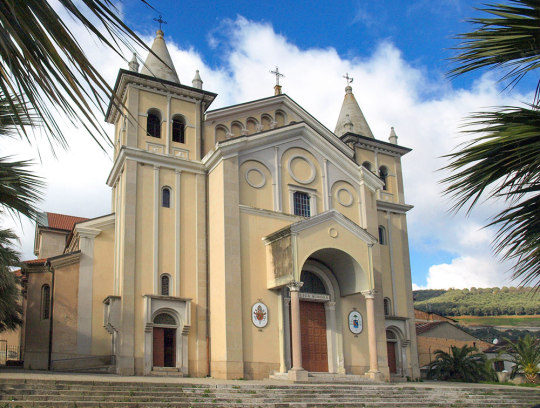
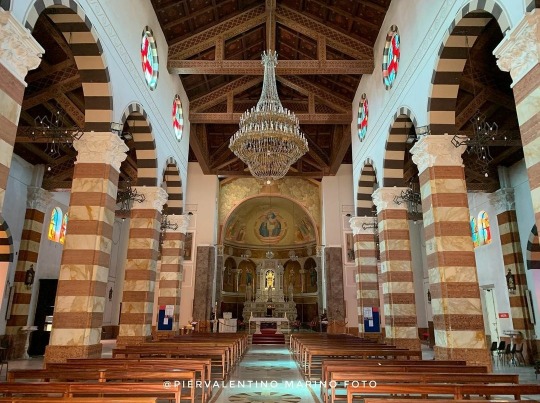
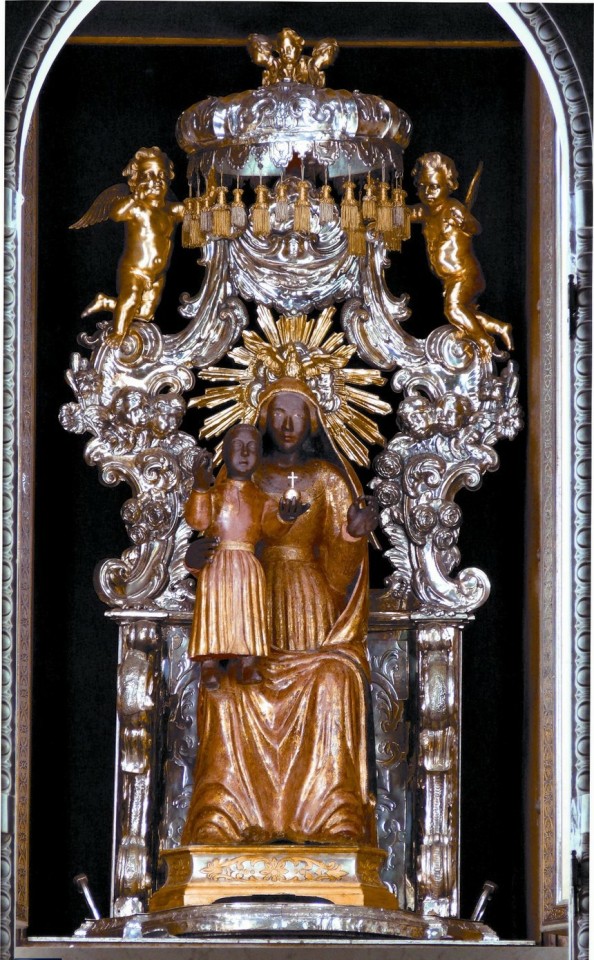

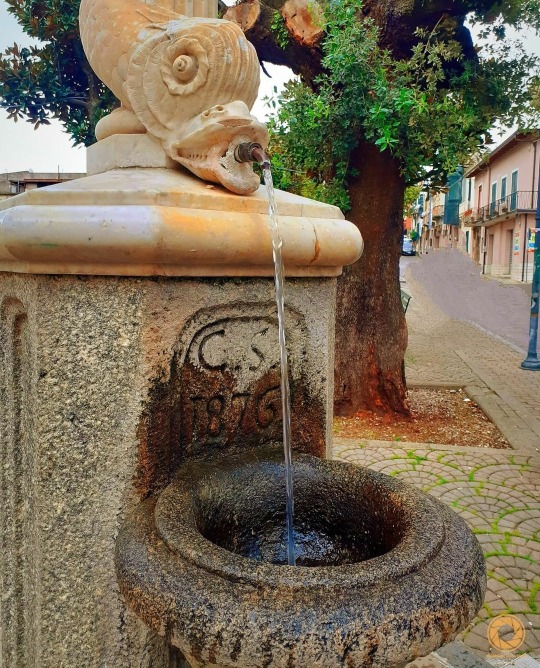
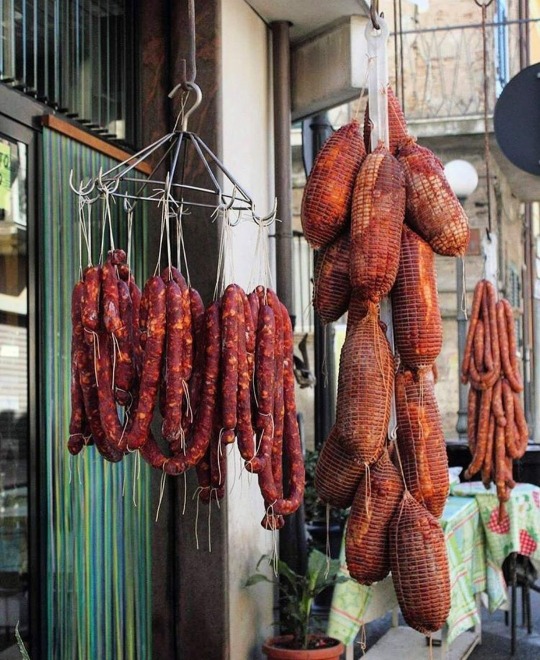
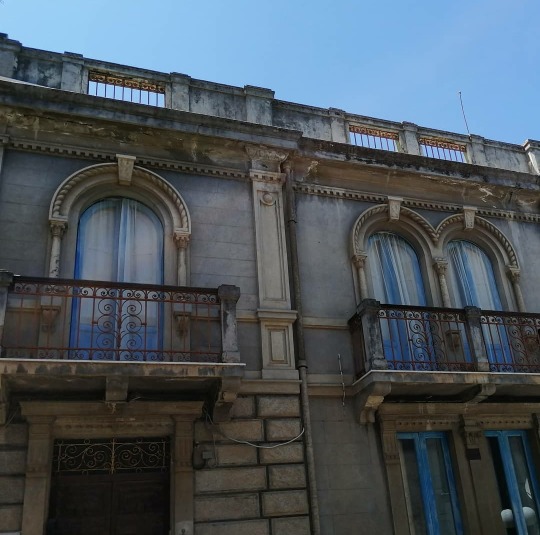
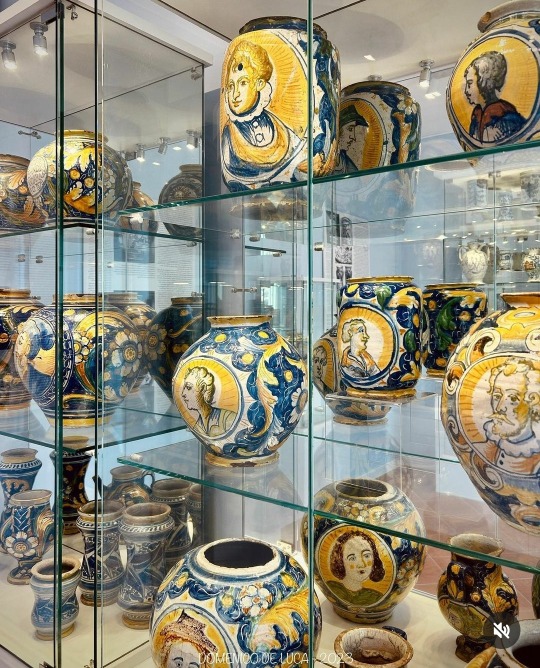
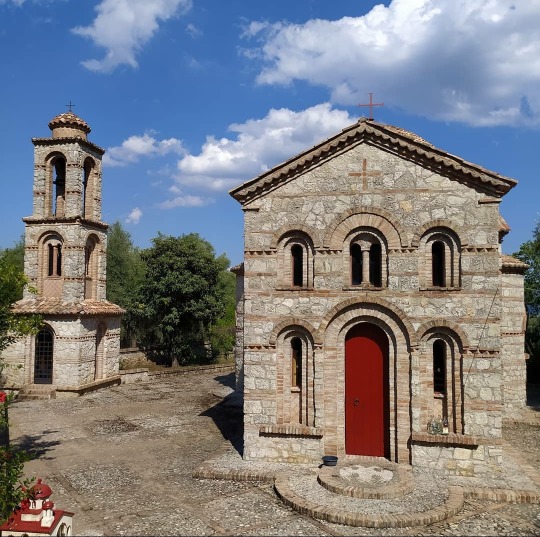
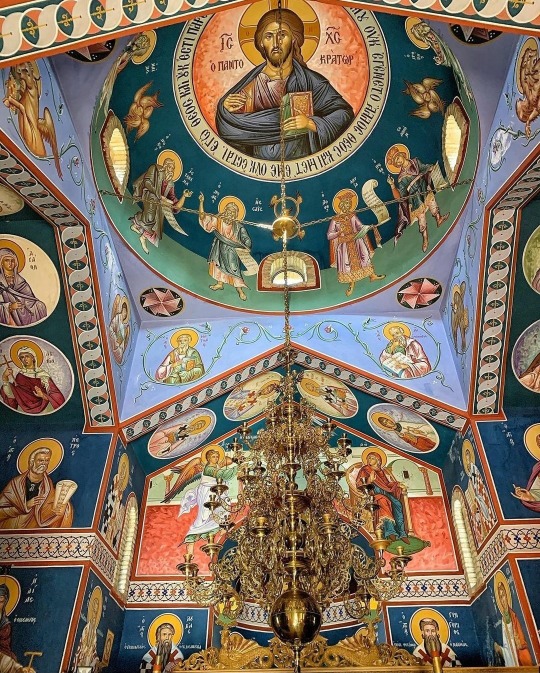
Seminara, Calabria, Italy
Seminara is located at the tip of the Italian boot about 30 kilometers (19 miles) north of Reggio Calabria. Its noteworthy political past includes turn-of-the-15th-century battles associated with the Italian Wars and a 1535 visit by the Holy Roman Emperor Charles V, who entered Seminara in a triumphal cortege to celebrate his victory over the Ottomans in Tunis.
Historically, the town has also had a reputation for its fine olive oil and silk.
Its two most distinguished citizens reflect southern Calabria’s Greek heritage, which endured long past the periods of Greater Greece and the Early Middle Ages when Orthodox Churches were established throughout the territory. Barlaam of Seminara (1290-1348) was an influential Byzantine-Greek clergyman and philosopher, and Leonzio Pilato (died 1364) was the first to translate Homer’s Iliad and Odyssey into Latin. His translations were used by the likes of Petrarca and Boccaccio.
The sanctuary of Maria Santissima dei Poveri is the main place of worship in Seminara, a town in the city of Reggio Calabria. It is well known because it preserves the statue of the Madonna dei Poveri, known as the Greek Black Madonna of San Basilio Magno. It is the oldest wooden statue in Calabria, carved in cedar wood and covered in gold and with its 92 cm, it is the second tallest black Madonna in the world, after that of Verdelot, in France.
In Seminara there is also one of the most interesting Greek Orthodox monastery of Southern Italy. Founded in 9th century by Sant’Elia of Enna, a Sicilian monk who lived in asceticism in a nearby cave, the monastery was endowed with rich goods and privileges by the Byzantine emperor Leo VI the Wise, who appreciated its sanctity and wisdom.
The monastery soon became a center of spiritual and cultural radiation, attracting numerous disciples and pilgrims, including the famous Filareto l’Ortolano, who died there in the odor of sanctity.
Unfortunately, it duffered the historical vicissitudes of Calabria, including invasions, earthquakes and persecutions. In the 16th century, following the forced Latinization of the Southern Orthodox churches, the monastery was abandoned and fell into ruin. 9th century Greek Orthodox Monastery. It was restored in 2005 and is now open for pilgrims and travelers.
Photos by Calabria Straordinaria, @piervalentino_pierva, @karim.ayed.1976, @dmncdlc, @morgana_zeta, , @esplorando_dietro_casa e @giuliaeats
Follow us on Instagram, @calabria_mediterranea
#seminara#calabria#italy#italia#south italy#southern italy#mediterranean#architecture#art#sculpture#sculptures#black madonna#greek orthodox#orthodox christianity#religion#byzantine#history#italian#europe#greek#church#churches
36 notes
·
View notes
Text

it’s kind of fun that Pantagruel’s birth also works perfectly well as a satire of Buddha birth stories, despite the fact that Rabelais almost certainly doesn’t really know who that is (he’d have known Barlaam and Josaphat better I think)
10 notes
·
View notes
Text
josaphat destroying pagan idols

from a manuscript of barlaam und josaphat, alsace, c. 1469
source: Los Angeles, Getty Museum, Ms. Ludwig XV 9, fol. 101r

398 notes
·
View notes
Text




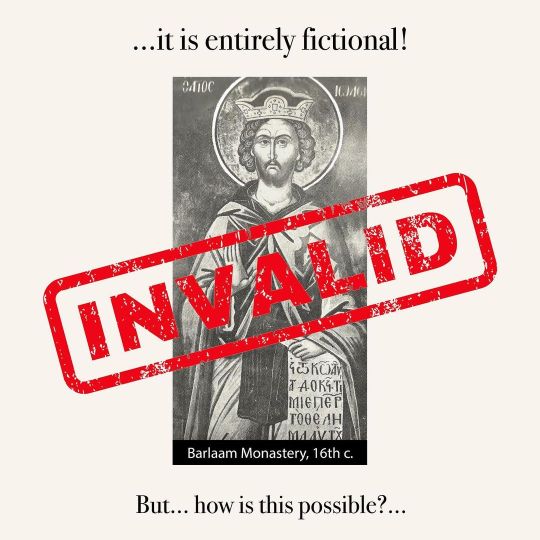
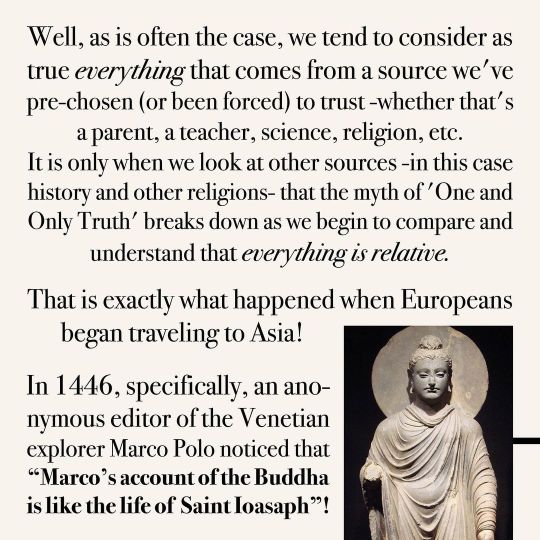

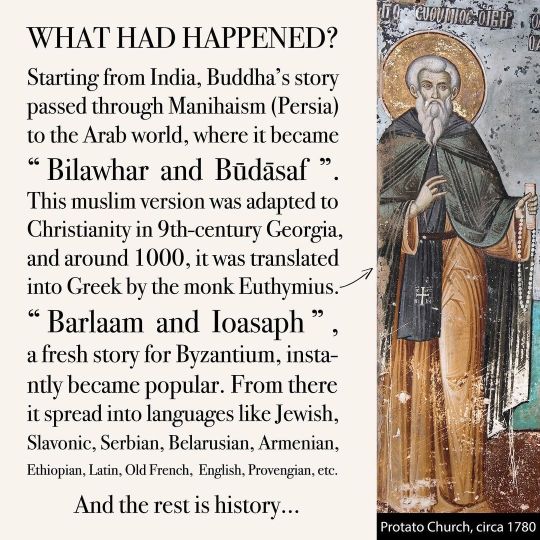


I found this amazing post about Buddha, and how his story became venerated in Christianity through the "saint Ioasaph"!
As the Theologian Academic John Sanidopoulos put it: "Though there are similarities between the tale of Joasaph with that of Buddha, this does not negate the historicity of either figure, but only shows a similarity in the origin of the tales. Though it is true the early story of Joasaph is colored with imagery from the life of Buddha, the latter part of the story is similarly colored by the life of St. Thomas the Apostle and St. Anthony the Great. And the theology of the story is influenced by John of Damascus, and the entirety of the "Apology" of the Athenian Philosopher Aristeides is contained within. The lives of Barlaam and Joasaph are primarily told as a literary tale with the seeming purpose of catechizing those of the Far East with a familiar tale. This was often done by ancient writers to steer a story of what may have elements of truth towards a higher didactical purpose."
13 notes
·
View notes
Text
SAINTS&READING: SATURDAY, APRIL 5, 2024
MARCH 23_APRIL 5
ifth Saturday of the Great Lent: Laudation of the Mother of God. Food with Oil
VENERABLE NICON, ABBOT OF THE KIEV FAR CAVE (1088)

Saint Nikon of the Kiev Caves was the first disciple and fellow-ascetic of Saint Anthony (July 10), the founder of the Kiev Caves monastery, to which he came as a priest. At the monastery he tonsured all the new monks, and among their number was Saint Theodosius of the Caves (May 3 and August 14).
For tonsuring the favorites of the Great Prince Izyaslav, Saints Barlaam (November 19) and Ephraim (January 28 ), Saint Nikon brought the wrath of the prince down upon himself, but he refused to force the new monks to leave the monastery. The princess calmed Izyaslav, and he left Saint Nikon in peace.
When the number of brethren in the monastery had increased, Saint Nikon desired to go into seclusion and live as a hesychast. He went to the Tmutarakan peninsula (on the eastern banks of the Kerchensk straits) and settled in an unpopulated spot. When news of his holy life and spiritual gifts spread throughout the region, many gathered about him, wishing to follow his example. Thus a monastery and a church were founded in the name of the Most Holy Theotokos.
When he returned to the Kiev Caves monastery, Saint Nikon was obedient to Saint Theodosius as his spiritual Father. According to Saint Nestor the Chronicler (October 27), when Saint Theodosius had to go somewhere, he entrusted all the brethren to the care of Saint Nikon. Sometimes he asked Saint Nikon to offer instruction to the brethren in place of himself. Often, when Saint Nikon was binding books, Saint Theodosius sat near him and spun the thread for the binding.
When Prince Svyatoslav drove out his brother Izyaslav from Kiev, Saint Nikon returned to the monastery he founded. He returned under the igumen Stephen. When Saint Stephen (April 27) left the Kiev Caves monastery, Saint Nikon was chosen as igumen of the monastery. He toiled much to adorn his monastery with spiritual books and icons. He died at a great old age (+ 1088) and was buried in the Near Caves of Saint Anthony.
Source: Orthodox Church in America_OCA
St BASIL OF MANGAZEA IN SIBERIA (1600)

The Holy Martyr Vasilii (Basil), Mangazeia Wonderworker, – was the first saint glorified in the Siberian land. He accepted a martyr's death on 4 April 1600, and from the mid-XVII Century he is deeply venerated for manifold manifestations of grace in help of infirmities, in sorrow, and in desperate straits. Blessed Vasilii was the son of a not-rich inhabitant of Yaroslavl', Feodor by name, and was taken by a certain rich Yaroslavl' merchant to a place for the selling of his wares in sub-polar Mangazeia – one of the first Russian cities in Siberia. Vasilii strictly fulfilled the Christian commandments. From his early years his integrity was obvious to all. Meekness and humility were his finery, and his heart was filled with faith in God and by piety. Love for prayer impelled him during time of Divine-services to leave off with mundane concerns and to go to the holy church. The devout youth just barely turned age 19, when the All-Supreme, "looking out for his virtue, did intend to summon him to eternal blessedness, the which to attain from this temporal life is impossible otherwise, than by the narrow and afflicted path of an external testing". As the Church tradition testifies, one time, when Blessed Vasilii was at prayer in church during the Paschal matins, thieves plundered the wares of his master. An explanation was demanded of Vasilii. Despite the many shouts of his master, Righteous Vasilii remained in church until the end of the Divine-services. His money-loving master, at the instigation of the devil, suspected Vasilii of being an accomplice in the crime and upon his return from the church he was subjected to insults and beatings...Continue reading


Hebrews 9:24-28
24 For Christ has not entered the holy places made with hands, which are copies of the true, but into heaven itself, now to appear in the presence of God for us; 25 not that He should offer Himself often, as the high priest enters the Most Holy Place every year with blood of another- 26 He then would have had to suffer often since the foundation of the world; but now, once at the end of the ages, He has appeared to put away sin by the sacrifice of Himself. 27 And as it is appointed for men to die once, but after this the judgment, 28 so Christ was offered once to bear the sins of many. To those who eagerly wait for Him He will appear a second time, apart from sin, for salvation.
Mark 8:27-31
27 Now Jesus and His disciples went out to the towns of Caesarea Philippi; and on the road He asked His disciples, saying to them, "Who do men say that I am?" 28 So they answered, "John the Baptist; but some say, Elijah; and others, one of the prophets." 29 He said to them, "But who do you say that I am?" Peter answered and said to Him, "You are the Christ." 30 Then He strictly warned them that they should tell no one about Him. 31 And He began to teach them that the Son of Man must suffer many things, and be rejected by the elders and chief priests and scribes, and be killed, and after three days rise again.
#orthodoxy#orthodoxchristianity#easternorthodoxchurch#originofchristianity#holyscriptures#spirituality#gospel#wisdom#bible#faith#saints
2 notes
·
View notes
Text
Paralimpiadi: giorno 9
Ecco il consueto riassunto dei successi dei nostri atleti e atlete. Sono sempre più ammirata per la loro forza, la loro costanza a voler perseguire un risultato, a mettersi in gioco. Poi vedendo la gioia di alcuni genitori che assistevano alle gare in tribuna mi sono immedesimata in loro. Ho pensato che anche loro hanno fatto tanti sacrifici, hanno passato tanti momenti dolorosi, quando hanno…
#Alberto Amodeo#Antonio Fantin#Assunta Legnante#atletica leggera#Carlotta Ragazzini#Donato Telesca#getto del peso#Giada Rossi#Matteo Parenzan#nuoto#Simone Barlaam#sollevamento pesi#Stefano Raimondi#tennis tavolo
0 notes
Text
The glorious hot Italian swimming summer show is rocking the Paralympics too 💅🏻 🇮🇹
The heatwave is still in full force and so is my fangirling 💃🏻
Football might have failed the Italian hot girl summer dream, but our swimmers are sure serving it 💅🏻
#swimming#paralympics#jeux paralympiques#paralympics 2024#paralympic games#carlotta gilli#francesco bocciardo#stefano raimondi#simone barlaam#efrem morelli#vittoria bianco#angela procida#francesco bettella#monica boggioni
58 notes
·
View notes
Text





NPCs IMPORTANTES EN NEXT LIFE ONLINE
En el mundo virtual de Next Life Online, tenemos el reino Camelot, junto con otras regiones (las cuales podrán conocer mas adelante dentro del foro cuando se abra, o probablemente en un futuro post), y por supuesto, como todo juego, existen personajes cuyos roles son importantes en dichas zonas.
(Cabe aclarar, que estos personajes, serán NPCs que NO PODRÁN SER LLEVADOS POR LOS USUARIOS, ya que el staff será quien los manejará en futuros eventos donde sea necesaria la presencia de alguno de ellos, esto dependiendo la situación, por lo tanto, si bien estos personajes se ubicarán en zonas específicas del mundo virtual de NLO, ELLOS NO PODRÁN APARECER EN ROLES NORMALES, solo en eventos y posiblemente en otro tipo de situaciones)
Información Básica:
Barlaam "La Quimera" Raza: Hombre bestia PB: Carrion – Tensei Shittara Slime Data Ken
Basanta "El inamovible" Raza: Humano PB: Leonidas - Shuumatsu no Valkyrie
Excalibur "El Arma del Rey" Raza: Autómata PB: Durandamon - Digimon
Hektor "El Dorado" Raza: Enano PB: Don Quixote – Fate
Coronis "La Madre" Raza: Dragonewt PB: Vritra – Fate Series
Sif "La Bendecida" Raza: Hada PB: Trianda – Fire Emblem
Gémini "El vagabundo" Raza: Autómata PB: Svarog – Honkai: Star Rail
Cepheus "La Fortuna" Raza: Vampiro PB: Illumi Zoldyck – Hunter x Hunter
Laelia "La iluminada" Raza: Humano PB: Melina – Elden Ring
Gasto "El Invicto" Raza: Humano PB: Date Masamune – Sengoku Basara
... ¿uh? ¿Buscabas información mas completa de estos personajes? Bueno, eso no será posible, ya que esto es una demo de lo que se viene en el foro, si quieres conocerlos completamente, tendrás que esperar a que el foro abra!
Esperamos verlos pronto iniciar sesión!
#next life online#next life online novedades#next life online NPCs#foro hispano#foro rpg#roleplay#rol en foro#foroactivo#rol por foro#foro de rol#spanish rpg
5 notes
·
View notes